False!Science exposes the academic dislocation of Nature thesis, misleading the world for 16 years
Author:Quantum Time:2022.07.23
Yang Jingming is from the quantity of the Temple of Temple | Public Account QBITAI
The opening work published on Nature in 2006 is now exposed to fake!
The latest special report of Science disclosed that there were traces of tampering with the results of the thesis experiments.
Its worst impact is that it will mislead this field for 16 years since this century.
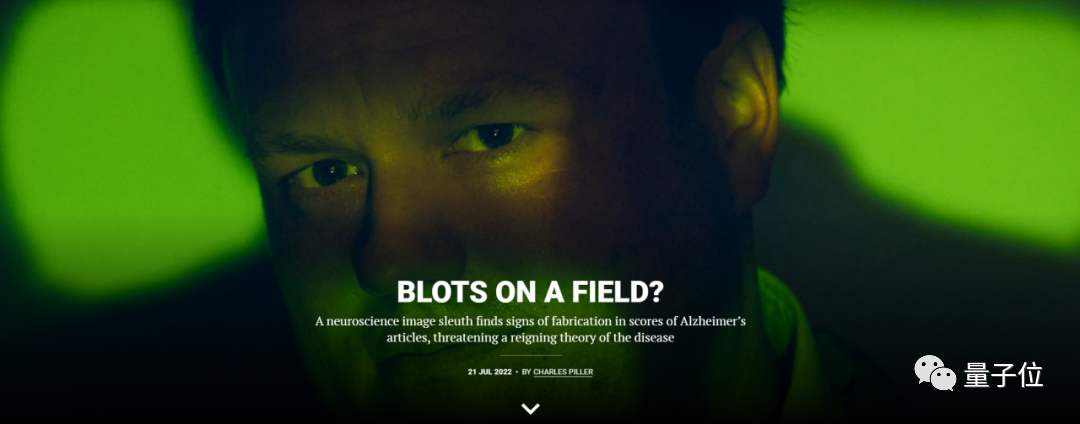
This paper directly proves that an important hypothesis of Alzheimer's study. To this day, the number of references has exceeded 2300 times.
And its direct beneficiary, the first author, has received huge support afterwards: it has received US $ 774,000 in 4 years, and subsidies of $ 7 million, with a total of more than 52 million yuan.
As soon as the news came out, it instantly caused a stir: shocking the full science.

Some people worry that such a big "academic thunder" will affect students in related fields that they cannot work.


But there is still a group of netizens who watch the lively.

Then Cell is probably the first to eat melon. (Doge)

However, there are still "fair words" for Science, because they also found that there are more than 20 papers in the parties and more papers, which not only refers to Nature.
The thesis experimental diagram has traces of tampering
The core papers involved this time were published on Nature in 2006.
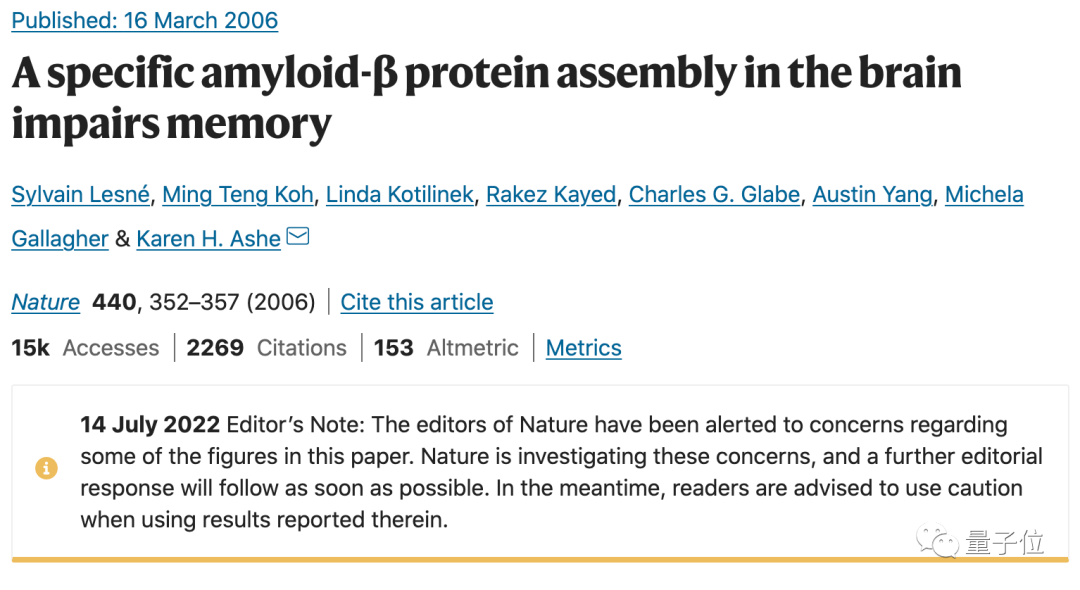
The paper proposes that a specific β-starch-like protein vertical Aβ*56 can damage brain memory, which may be a key substance that induces Alzheimer's disease.
Researchers said that they found this substance on genetically modified mice and extracted it purified and injected into young health mice. The results showed that the memory function of mice decreased.
At that time, the discovery of this substance provided strong evidence for starch protein hypotheses.
The hypothesis proposes that in the brain of Alzheimer's patients, the oligopoly formation formed after the gathered gathered by amyloid protein (Aβ) forms plaques, which causes neuronal fiber to be tangled and neuronal loss.
But from today's survey results, the key results diagram of the*key results of the Aβ56 experimental results in this paper is suspected of major fraud--
There were almost completely consistent strips in the experimental results.

In response to the part of the red frame in the figure, the investigators calculated the intensity of the relationship between the combined bands of the two lines, and the results showed that its correlation reached 0.98 (1 represents completely consistent), "almost impossible to be a natural event."
In the dissertation, the author is demonstrated through this results. As the age of Alzheimer's mice increases, the level of Aβ*56 in the body is also increasing.
Elisabeth Bik, a molecular biologist and a well -known academic counterfeit, said that the author may not get the expected results during the initial experiment, so the data tampered with the situation that was more in line with the hypothesis.
This further deepened the sources of the academic circles for Aβ*56.
You know, in the past ten years, many experts have questioned the authenticity of the research of purified Aβ*56.
Donna Wilcock, an expert in Alzheimer's disease at the University of Kentucky, said that the nature of this widow is very unstable and will spontaneously convert it into other types of oligoscope. The purified samples are likely to be a mixture.
This causes the symptoms that cannot decrease memory to Aβ*56.
Earlier, the academic community even doubted whether Aβ*56 really existed. Many laboratories have previously wanted to extract Aβ*56, but rarely succeeded.
In 2008, Dennis Selkoe, a well -known doctor in the starch protein hypothesis, also mentioned in two papers that he did not find Aβ*56 in the human body.
Now is the turn of Science, not only the experimental results cannot be reproduced, but also involved this "giant's shoulder" may no longer exist.
It may be misleading global research for 16 years
As mentioned earlier, this "work of the mountains" directly verified the starch protein hypothesis.
Since then, the academic industry has begun to bet on this.
According to Science, the support of the Nih (American Institute of Health) at the time of the support of "starch protein, oligopoly, and Alzheimer's disease" rose from 0 to US $ 287 million last year, equivalent to RMB 1.8 billion.
This year, NIH spent about $ 1.6 billion (about 10.814 billion yuan) on amyloid -like protein projects.
This amount directly accounts for half of Alzheimer's research.
Among them, scientists have contributed their ideas and thoughts in this field. Over the past ten years, some researchers have tried to treat Alzheimer's disease by reducing amyloon. However, according to the "Cognitive Psychology" book description:
Their attempts are like a roller coaster: it is invalid to prove that effective treatment in animal models to human patients.
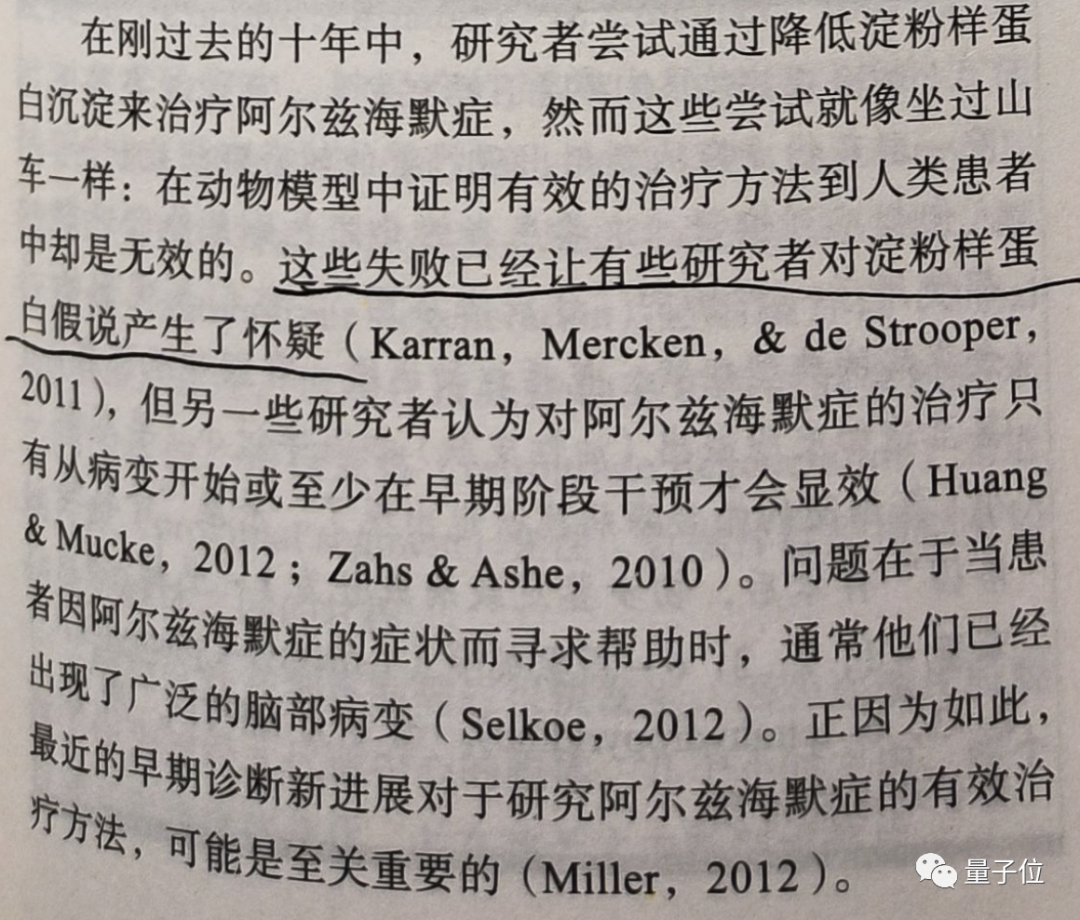
△ Picture source: Zhihu netizen@Jiang Xueqing cherry
From the perspective of Nobel winner and Stanford neuroscience Thomas Südhof, this is the most direct and obvious damage.
Zhihu netizen@知 知 知 believes that this fake allowing Alzheimer's research field to return to 10 years ago, academics were once again divided into neuromanological hypothesis, inflammatory hypotheses, and amyloin degeneration hypotheses.
In addition, the hypothesis of starch -like protein still cannot be falsified. What is hammered is a subtype "Aβ*56" of starch -like protein. For the industry, many pharmaceutical companies have developed based on this hypothesis. drug. You know, the cost of research and development of new drugs is high, the cycle is long, and if the drug cannot prove that it is effective, all processes seem to be meaningless.

It is worth mentioning that the activist of this survey stems from a question about drug research.
Matthew Schrag from the University of Vanderburg, who had previously criticized a like -minded lawyer because he criticized a FDA approved Aβ anti -drug.
The lawyer is investigating Simufilam, a drug that is being tested in clinical trials, who claims that drugs can improve their cognitive ability and repair a protein that can block Aβ deposition.
And they suspected that the research behind this was fraudulent, so they used existing medical knowledge reserves to conduct investigations.
However, some netizens believe that the fraud did not have much impact. The industry is currently recognizing the relationship between Aβ*42 and Alzheimer's disease.
Harvard neurologists said that although the results of Aβ*56 are doubtful, I hope everyone will not give up completely about starch protein.

However, he also mentioned that if several clinical drug experiments have failed now, this hypothesis may be hidden.
At present, Nature has issued a statement to investigate this paper. A spokesman at the University of Minnesota, the school where the research team, said the school was also reviewing the matter.
It is worth mentioning that Sylvain Lesné was found in this round of academic counterfeiting, and about 20 articles were suspected of fraud.
10 of them are related to Aβ*56.
The survey results show that at least 12 experimental results of these papers are suspected of major fraud.
Dennis Sailk, a well -known doctor in the field of Alzheimer's disease, bluntly said:
I think (these pictures) have no other reasonable explanation except for manipulation.
At the same time, some scholars also revealed that in a cooperation with Sylvain Lesné in the past, he found that the image he provided was very suspicious, so he asked the students to reproduce this experiment, but in the end they failed.
After that, he questioned Silwan, and the other party resolutely denied it.
In the end, this co -authored paper was withdrawn before the publication, and the scholar also broke up with Sil.
Communication Author: I still have confidence in Aβ*56
According to Science, the Chinese scientist Karen Ashe, a communicator of the paper, refused to be interviewed.
But in the response email, she said that she still had confidence in Aβ*56 and said that she was still studying the relevant content of the Aβ oligopoly structure.
At the same time, she believes that the SCIENCE investigation exaggerate and distort the impact of this paper on the academic world.
I spent decades to study Alzheimer's disease, but found that one of my colleagues tampered with the image and misleaded me and the entire academic community. What is even more distressing is that such an authoritative scientific journal also blatantly distorted my research results.
Asia is a professor of neurology at the University of Minnesota Medical College and the director of the school's Alzheimer's Laboratory.
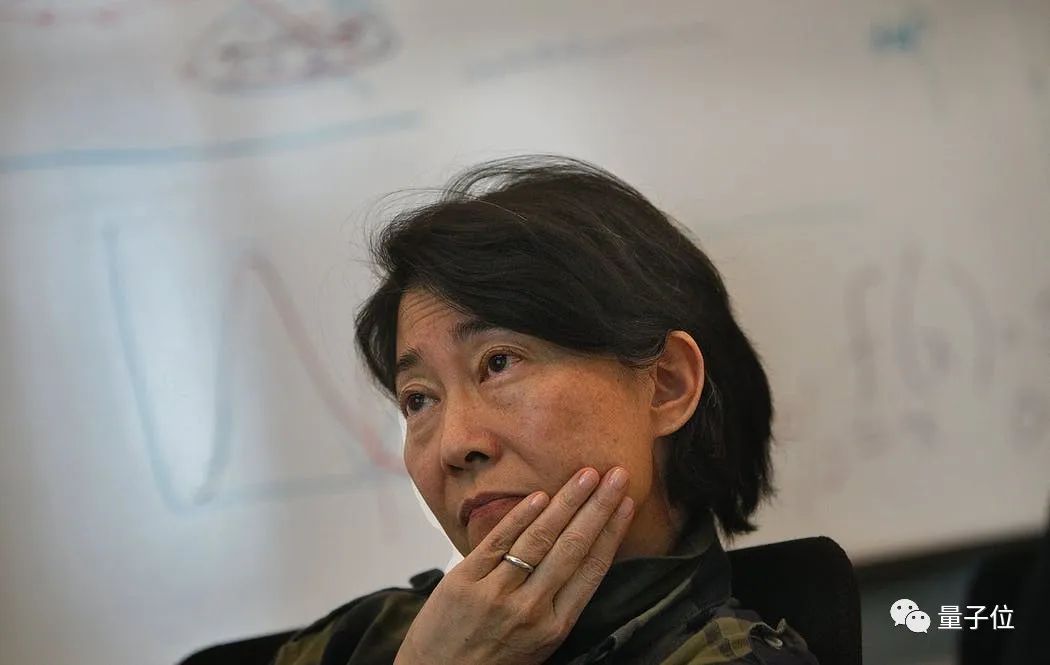
In fact, because of this research, Asia won many Alfzheimer's awards.
Just two weeks after the paper was published, she received Potamkin Prize, which was up to $ 100,000.
Later, he also won the Metropolitan Metropolitan Life Foundation Alzheimer Disease Medical Research Award for $ 50,000 awards+$ 200,000 research fund.
It is reported that Asia has received more than 28 million US dollars (equivalent to approximately 180 million) from the National Health Institute (NIH).
On the other side, the paper is well -known as Sylvain Lesné.
In 2009, he established a laboratory provided by NIH with funding support at the University of Minnesota.

From 2008 to 2012, he received more than $ 770,000 from NHS to study Aβ*56, and at the same time, more than 7 million US dollars used to study Alzheimer's disease.
In 2020, he also became the leader of the University of Minnesota University of Neuroscience.
At present, Silwan has not yet made any responses to the outside world, and the relevant survey continues.
- END -
Tongxin co -conspiracy development · front -line survey to improve operation efficiency Nanning China and Vietnam trains running out of acceleration
Video/Snapshot, T_100, F_JPG, M_fast "Controls =" Controls "data-version/ueditor/video/mp4/20220619/165561184518793.mp4 "transcoding =" 1 "style =" width: 400px; " Source: Hear Chaotia
Six lines such as Shijiazhuang Bus No. 63 Road 93 are temporarily adjusted
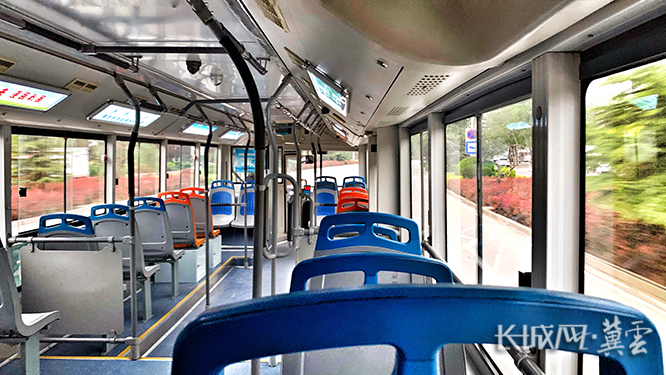
Great Wall Network · Jiyun Client News (Reporter Yuan Yue) According to the WeCha...